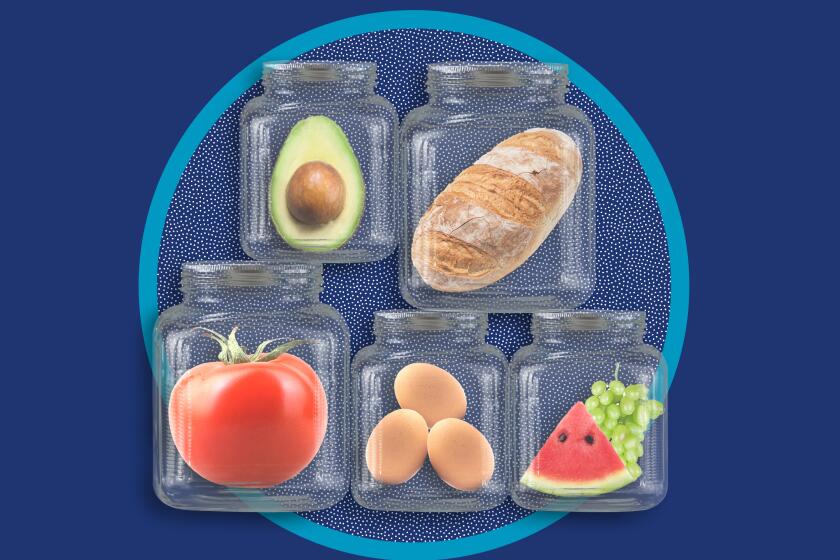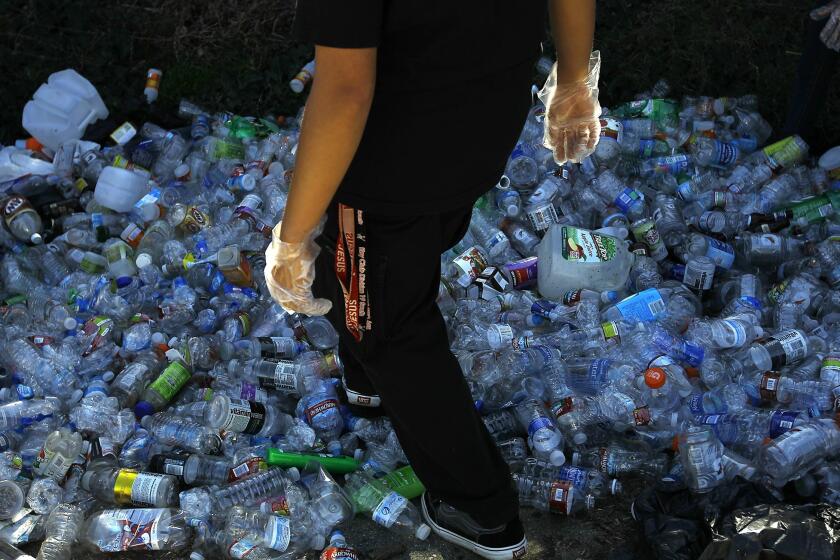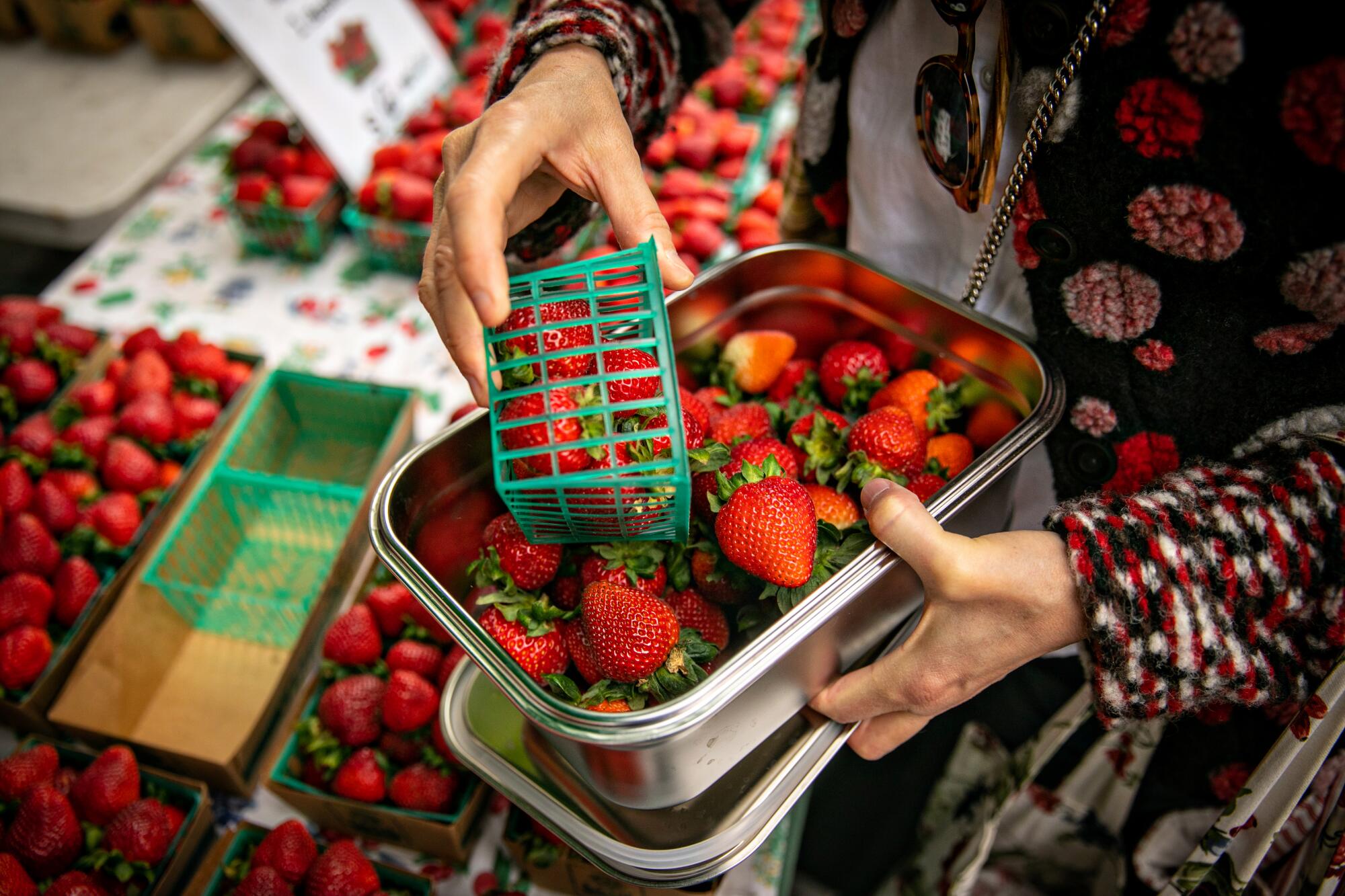
- Share via
The greatest sin in most American households is our addiction to plastic water bottles.
So says Anne-Marie Bonneau, who writes the food blog “Zero-Waste Chef” and is the author of “The Zero-Waste Chef: Plant-Forward Recipes and Tips for a Sustainable Kitchen and Planet.” But even though Bonneau has been plastic-free since 2011, she doesn’t want anyone to “get hung up on ‘zero waste.’ ” It is, she says, “just a goal.”
This conversation has been edited for clarity and length.
Was there a time when you weren’t so conscientious about your food purchasing and consumption? What brought about the change?
When my kids were born, I didn’t pay as much attention to my environmental side. I was busy. I did not want an SUV, but when my daughter was 6 months old and I put her in the car seat of that SUV, my back didn’t hurt. And now I’m like, I can’t believe I did that.
Anne-Marie Bonneau, known as the Zero-Waste Chef, demonstrates one easy way to reduce food waste: make soup.
In 2011, I started reading about plastic pollution in the ocean. I wanted to learn more and did more reading up on it, about albatrosses feeding it to their young. Plastic is a relatively new product that is wreaking havoc. I decided I had to break up with plastic.
The problem of food waste has some solutions. Start by being smart about shopping and storing.
It took us months to change our routine. But it’s easier to do in California because we have farmers markets and bulk bins all over the place.
Because I was paying attention to plastic waste, it made me pay attention to all the waste. Up to 40% of the food we produce in the U.S. is uneaten.
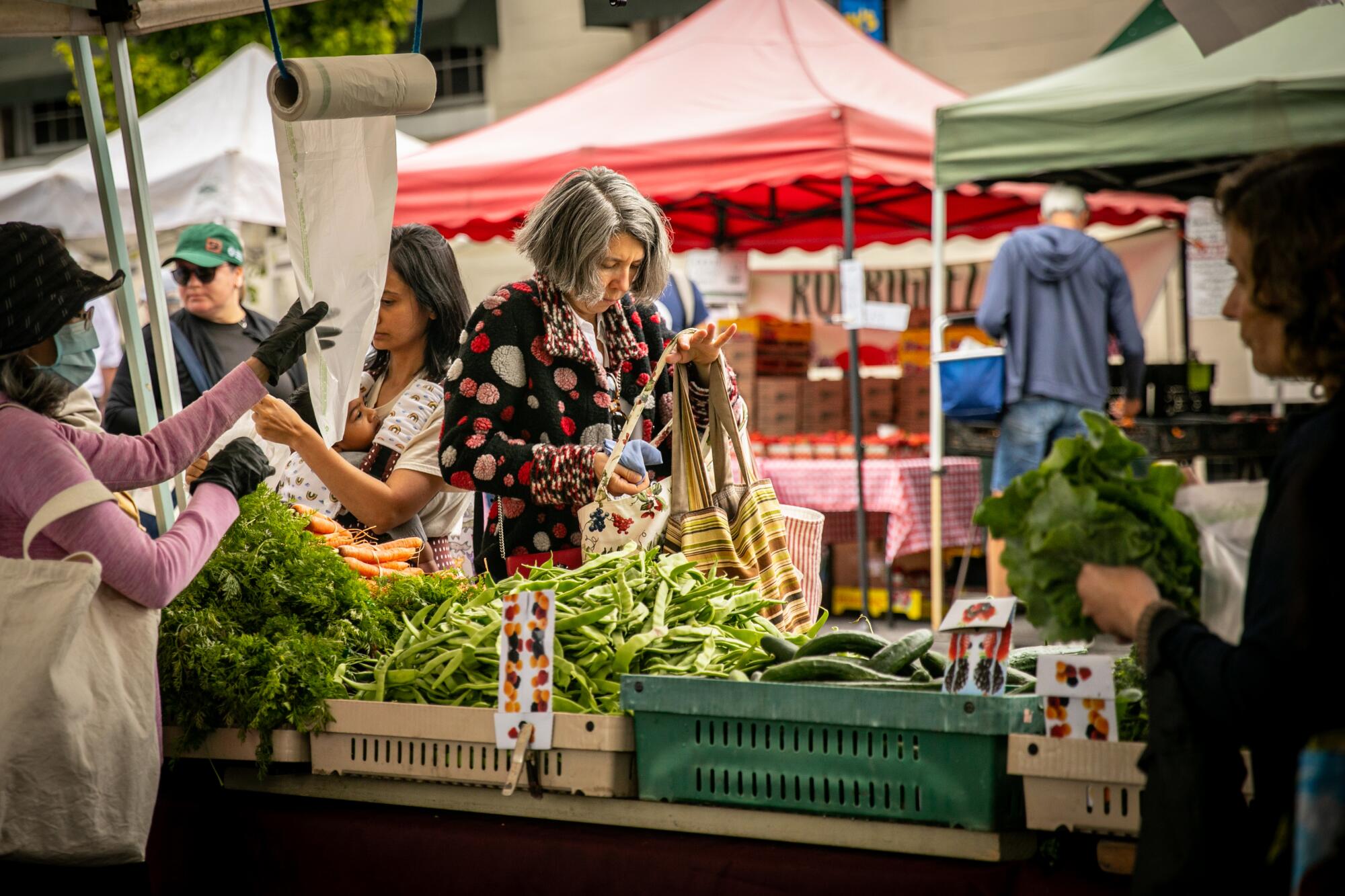
What was your greatest challenge when you broke up with plastic?
I found personal care really hard. Back then, there weren’t many shampoo bars. Deodorant was really difficult. One day my daughter made me some homemade deodorant, which works really well.
Your website lists “50 ways to kick plastic.” What’s at the top of the list?
Bottled water is No. 1. When you drink water from plastic bottles, you are consuming microplastics. Plastic can leak toxins into food, and if your bottled water is heated, it can potentially leach toxins faster.
The county becomes the largest government entity to restrict single-use plastic food ware items from restaurants and other commercial operations.
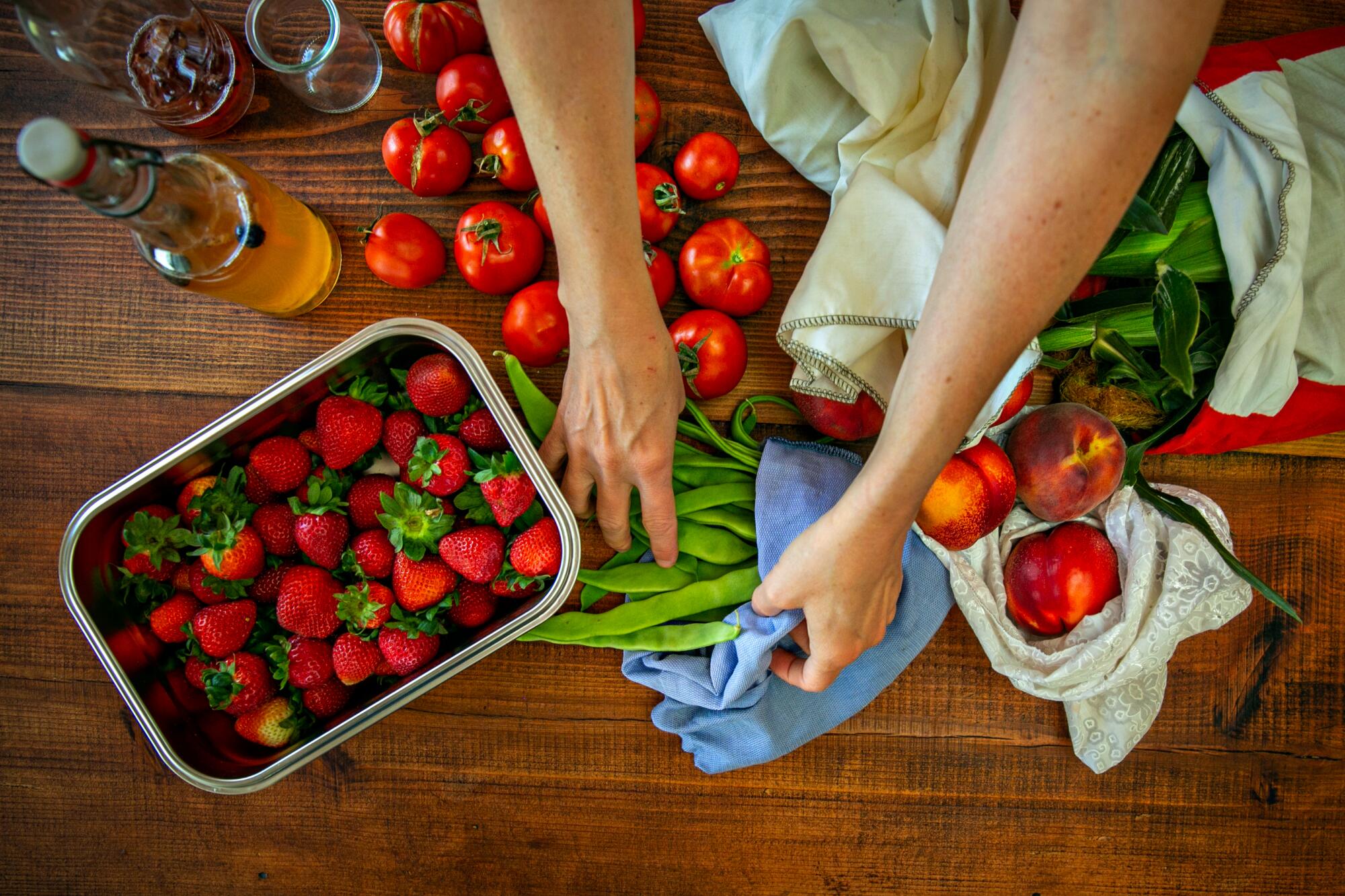
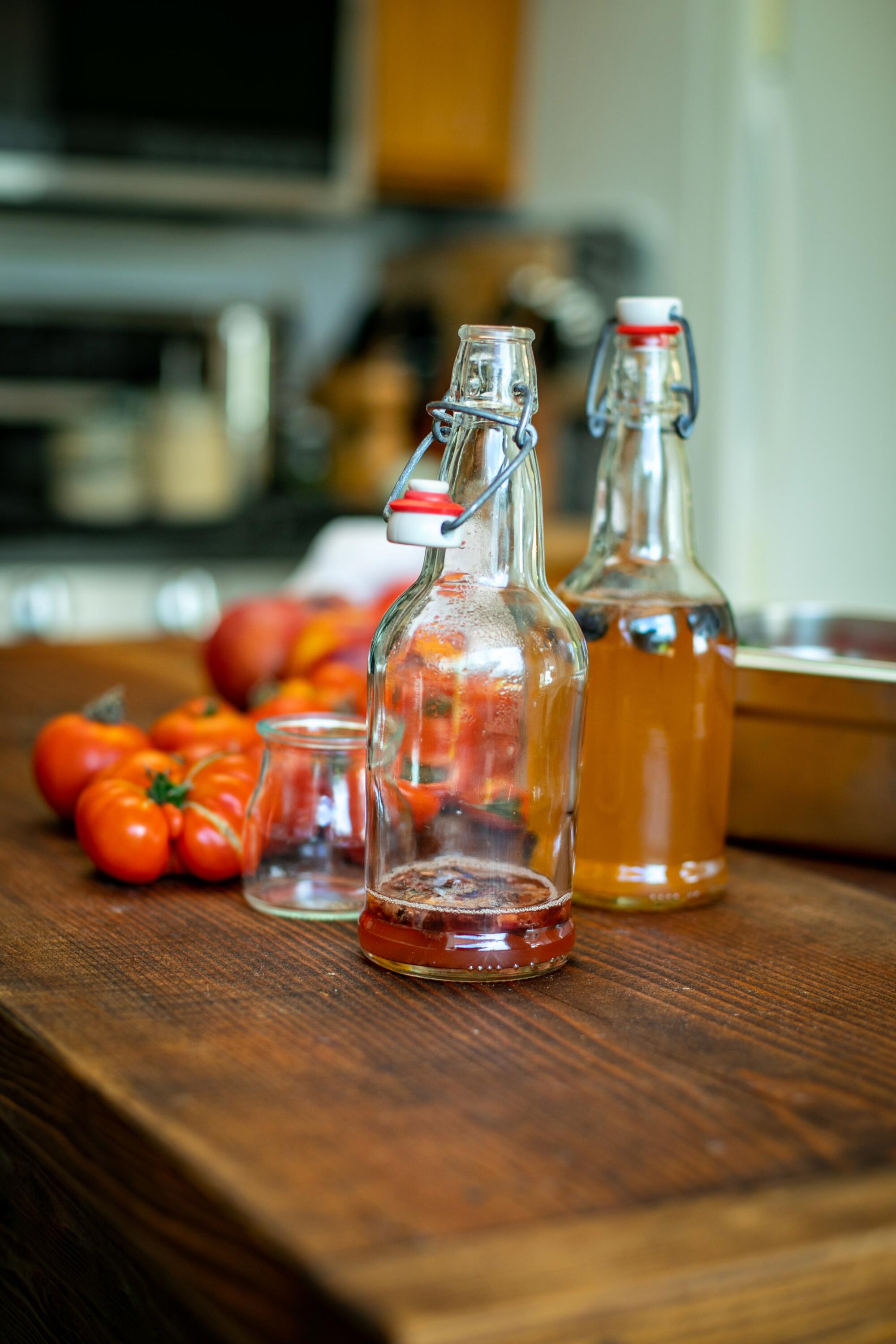
Plastic shopping bags and produce bags are bad. And straws. The other thing is to-go coffee cups, which are lined with plastic. Hot drinks and plastic are not a good combination. Find a cafe that will let you bring your own thermos.
All those would make a big dent if you cut them, especially bottled water. Their recycling rates are low because our system cannot handle the huge amount of plastic. Recycling is a market-based endeavor. The city picks up all the plastic and takes it to the sorting facility. They sort it out and bale it up. If there isn’t a market for that bale, it’s going to go in a landfill or an incinerator.
If the Golden State is going to lead the world toward a better, safer future, our political and business leaders — and the rest of us — will have to work harder to rewrite the California narrative. Here’s how we can push the state forward.
When you shop for food, how do you plan ahead, where do you shop, and what do you take to the store to transport various foodstuffs?
I’ll first look in the refrigerator and see what I have on hand. I’ll think of what I can make with that, rather than ask, “What recipe do I feel like making today?” I don’t plan the whole week or month at a time — usually just the next couple of meals.
I shop religiously at the farmers market. I take my cloth shopping bags and bring about eight or 10 cloth produce bags. If I buy berries, I bring jars — then they come home intact and the vendor can reuse the baskets if I leave them at the booth.
I’ll take jars or produce bags to the bulk store depending on what I’m buying. I buy milk in returnable glass bottles, and I take jars to places where I can get cooking oil in bulk. At a lot of bulk stores, they will weigh the bottles, so you only pay for the contents of the jar.
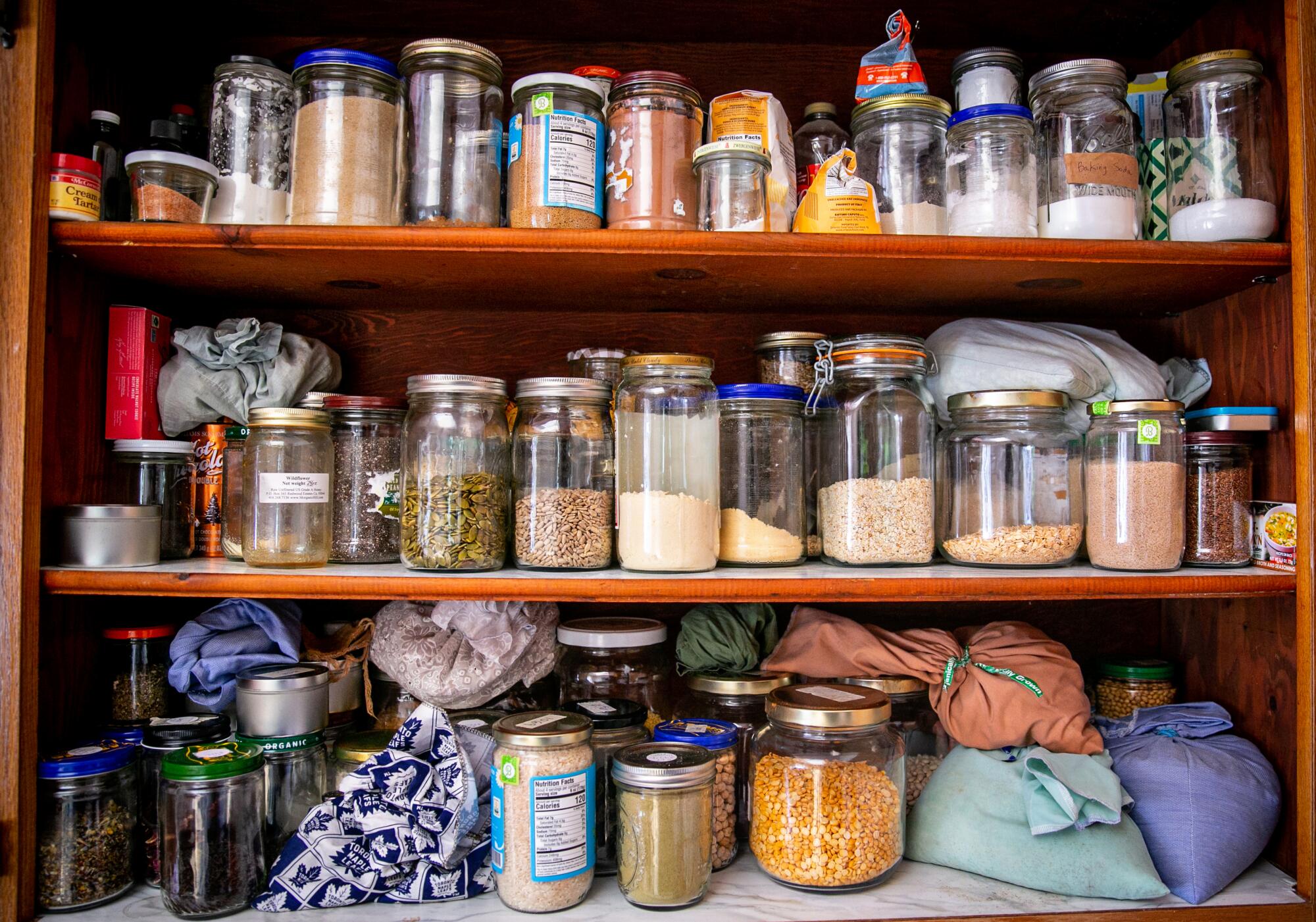
Do you ever go out to eat?
We do. When I go out, I take empty containers with us. My daughter’s favorite place is a Mexican restaurant near us. The plates are really big, and we can’t possibly finish them. So, I put the leftovers in my containers and bring them home. Sometimes someone from another table will lean over and say, “That’s a great idea. I’m going to do that.”
We know about plastic. What are some of the other bad habits one might encounter in a typical American kitchen?
Food waste is a huge problem. There’s zero downside to reducing it. If you eat all the food you buy, you are going to bring less stuff into the kitchen.
And most people eat too much highly processed food. Almost everyone needs to eat more vegetables and those are available at the farmers market.
Do you eat meat?
I do if my husband or daughter buys and cooks it, but I don’t usually buy it myself, although I did buy chicken feet to use for broth. My daughter gets the good stuff — pasture-raised. As Michael Pollan says, they live a good life and have one really bad day. So I guess I’m an omnivore, but I’m a really picky omnivore.
What advice do you have for someone who would like to change their approach to procuring and eating food but finds the concept of zero waste to be intimidating?
It’s just a goal. Don’t get hung up on “zero waste.” Even if I don’t bring plastic into my home, it’s still in the food chain. It’s very difficult to avoid.
If people started with looking at what food you have on hand and figuring out what you can make, it would slash wasted food. It makes you more creative and makes cooking more fun.
More to Read
Sign up for Essential California
The most important California stories and recommendations in your inbox every morning.
You may occasionally receive promotional content from the Los Angeles Times.

